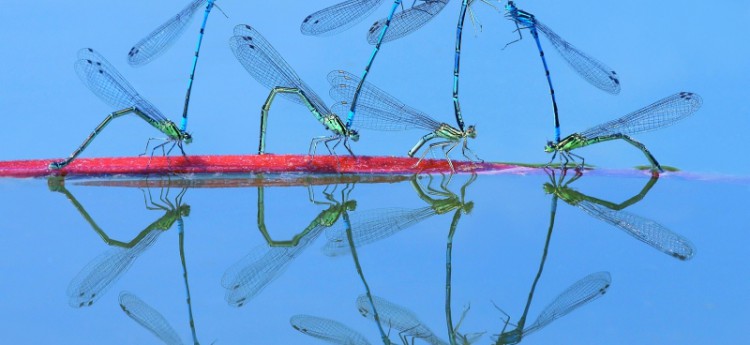Your experience means a lot to photographers worldwide so, please,
answer the following questions.
1. Can you tell us a little about yourself and your history?
Petar Sabol, I’ve been an avid photographer since 2007. I’m especially interested in macro and wildlife photography. These are my commonest motives, although I like shooting landscapes, portraits etc.
2. What kind of gear do you use?
- • Camera body
- • Lens
- • Tripod
- • Filters
- • Flash
- • Camera bag
- • Mention others, if any
I use Sony Alpha equipment. I’ve changed many camera bodies, from a100 to a99. The tripod Gitzo succeeded the former Vanguard. Also, grading and polarizing filters. I don’t use UV and other protective filters. Since I prefer natural light, flash is employed only when necessary. My other gadgets are remotes, sun bounces, cleaning sets etc.
3. Which is your favorite lens? Why?
It’s hard to say which my favorite is; all of them serve a purpose. Sony 70-400 G, for example, excels in range and sharpness, also it’s portable, but, on the other hand,
Sony 300/2.8 is ultra fast and sharp with far bigger aperture. Carl Zeiss 135/1.8 is perfect for portraits and ultra shallow depth of field. Simply, they are all excellent and none stands out as a winner.
4. When you go in one of your travels, what do you take with you? Why?
I usually carry two bodies: 16-50/2.8 and 70-400. I bring 50 1.4 and wide angle lens if it’s likely to be necessary and useful.
5. Among the gadgets that you own, is there something that you wish you hadn’t bought? Why?
I haven’t regretted for buying anything, though I wouldn’t buy any ultra zoom like 18-250 or 16-105. Don’t get me wrong, these are not bad lenses but, my criteria went up and it’s inappropriate to use them considering other lenses I’ve got.
6. In the field, what are your settings?
- • Aperture
- • Shutter Speed
- • ISO
- • White Balance
- • Focus – Manual/Auto
- • Image Format – RAW/JPEG
Rare are the situations when I can have a universal setting. I like separating the central object from background, so I often use completely open aperture.
When capturing an action, the shutter speed is at least 1/1000; ISO is put on auto limited to 3200 for example; WB is put on auto since the camera seldom makes mistakes with WB; focus is on auto except with macro photos when it’s manual. RAW is the common format, but for something less important, JPEG is a good choice so as to avoid processing RAW photos.
7. -What software do you use to manipulate/edit your photographs? Explain your work flow.
I’ve been using PS Camera Raw for some time, thou occasionally Phase One. Most of the time is spent on RAW, almost half an hour, to make the most out of it. Further processing is rarely necessary since I am not so skillful and I don’t go for photo manipulation.
8. How do you educate yourself to take better pictures?
Taking photos is the best way of improvement. Mistakes are corrected ad hoc and I try not to make them any longer. You learn most from your own mistakes. Patience and concentration, rather than technique, are what I find important.
9. Is there a photographer/photographers you appreciate the most?
I like seeing works from many of my fellow photographers.
10. What is the one thing you wish you knew when you started taking photos?
An interesting question. I wish I had started sending photos for exhibitions earlier and, generally, gone into photography earlier. Also, I would have invested in equipment more wisely.
11. What makes the good picture stand out from the average?
An excellent photo catches your eye immediately. It has a story in its motive, message, it’s aesthetically appealing, the light is perfect, it is intriguing, affects you emotionally, and makes you wonder what’s behind it.
12. What has changed in your life since you became a photographer?
Many things. I am more patient. I’d met many interesting people who became friends. Having been a member of juries, my knowledge of photography improved a lot, spent wonderful time with my fellow photographers, and last but not least, I’ve taken many beautiful photos.
13. What’s your useable-to-unusable ratio when you review images from a shoot?
When you shoot animals, you always end up with hundreds of photos which are to be selected and cut down to few. It’s hard to express that in figures. Experience and time make you learn not to trigger unnecessarily, though it depends on the object of shooting. Sometimes, one shot is enough to get an excellent photo, and on some occasions I need to use the burst mode of 12 per sec. to get a good one.
14. Choose a photo of yours and explain when and how it was taken?
Natural abstract
It was taken at a local pond in the middle of a hot summer day. On that clear day in May, I noticed dragonflies mating on the surface of water. They were landing on a floating stipe of water lily and formed a group of four couples. The game lasted pretty long so I had time to sneak to them trying hard not to stir the water. I used Sony a580 and Sony 70-400G, turned LCD over and, using live view, framed it and set the camera close to water. I made a few shots and that’s it.

